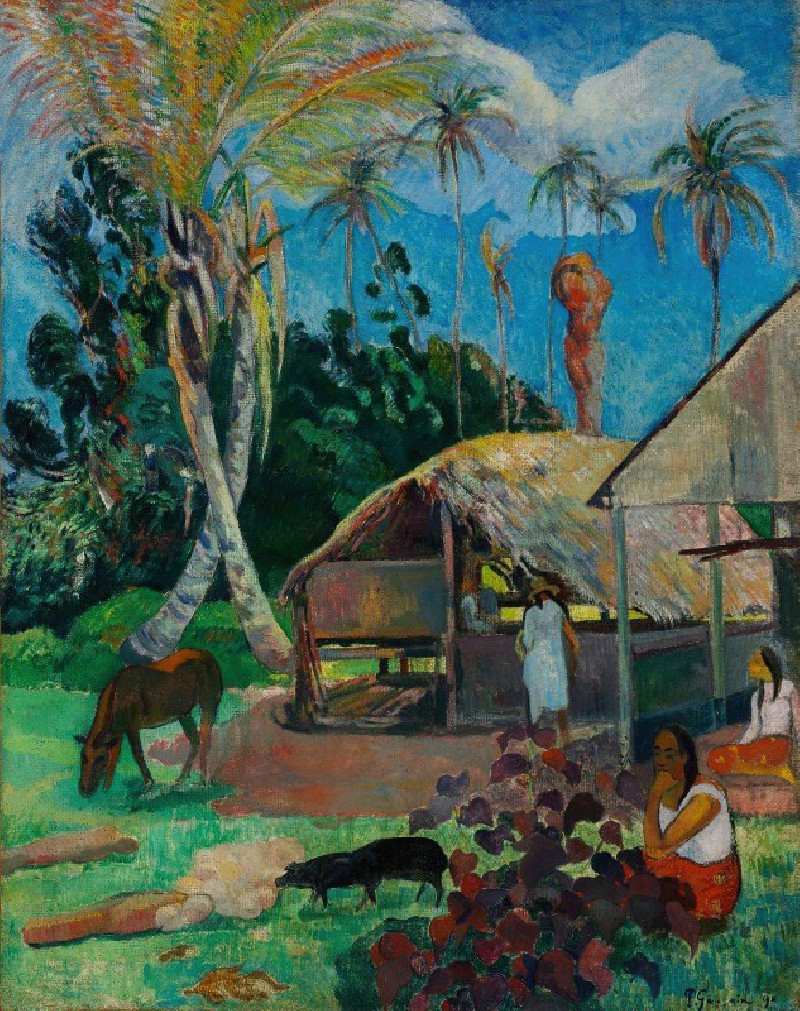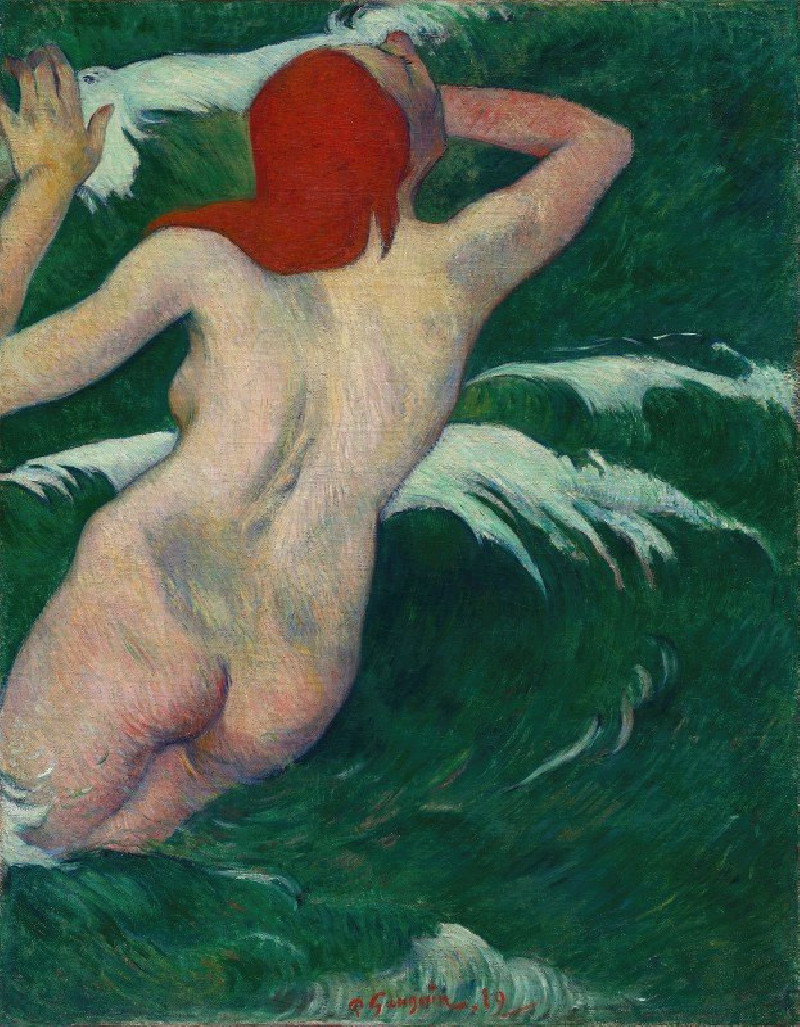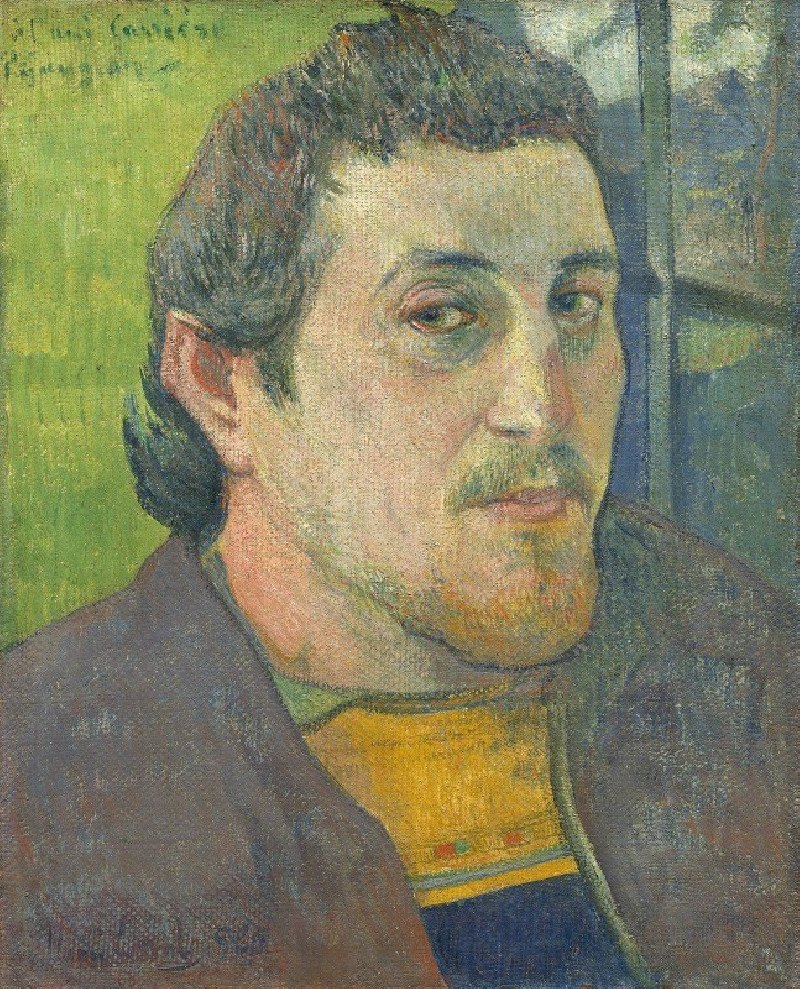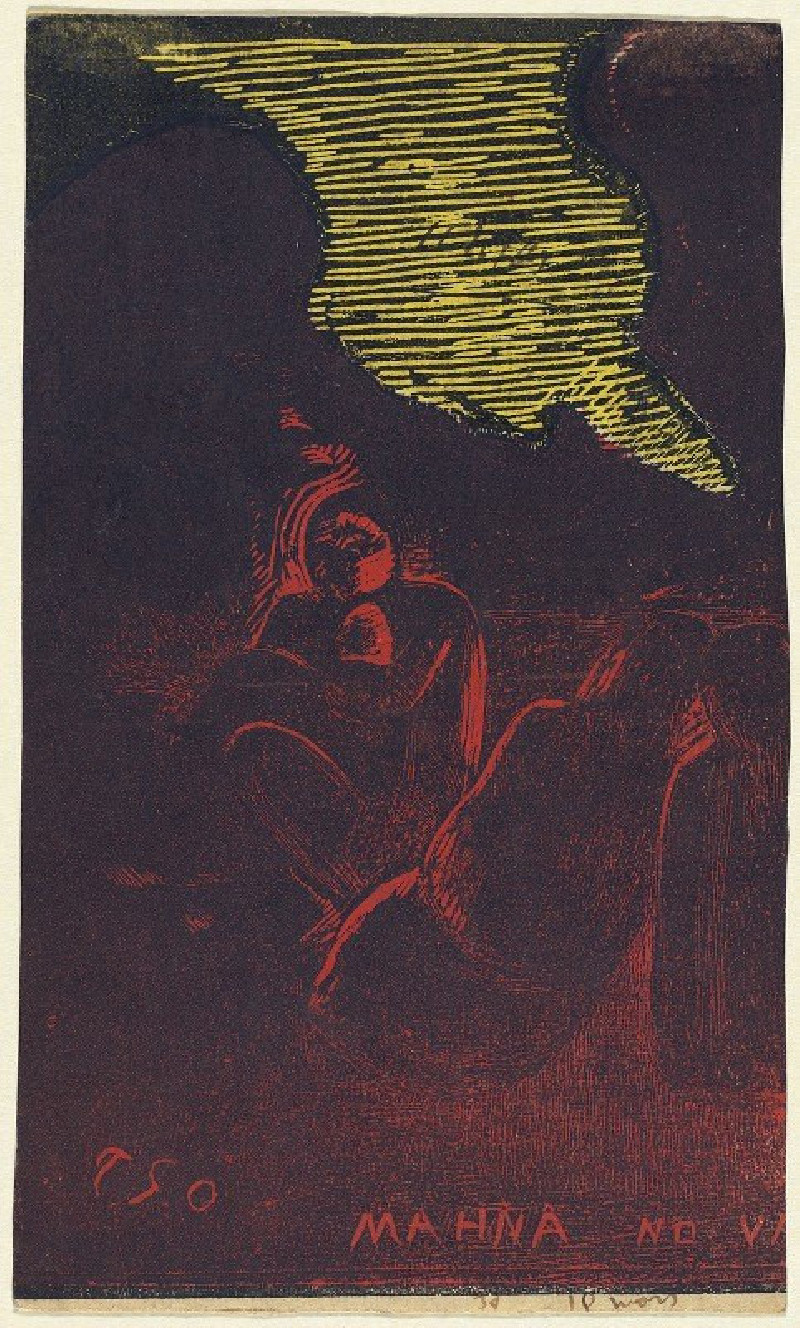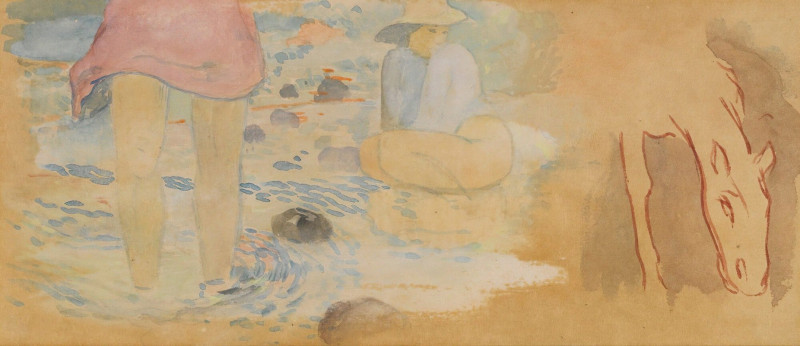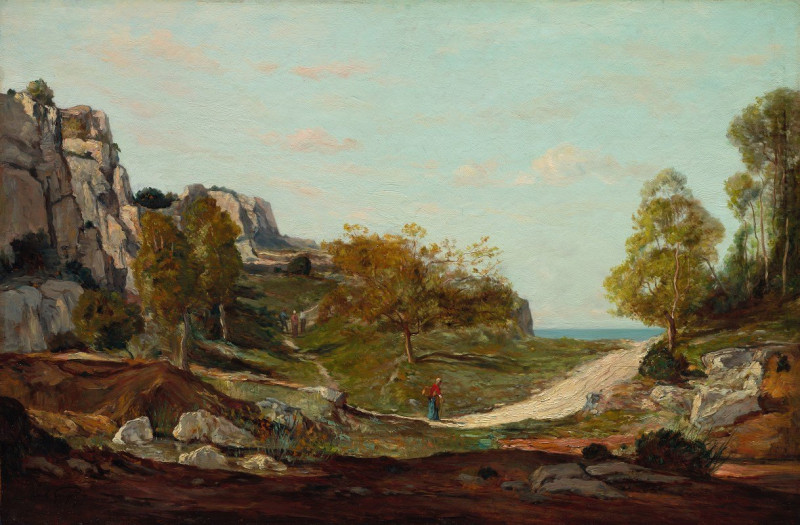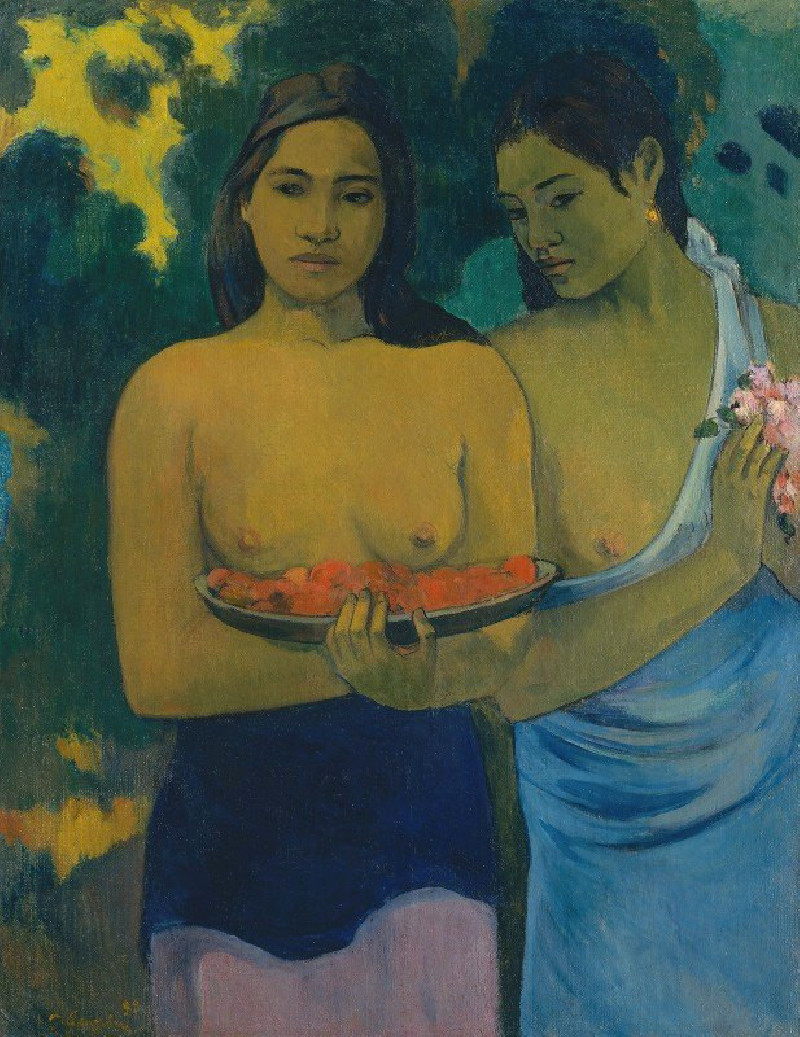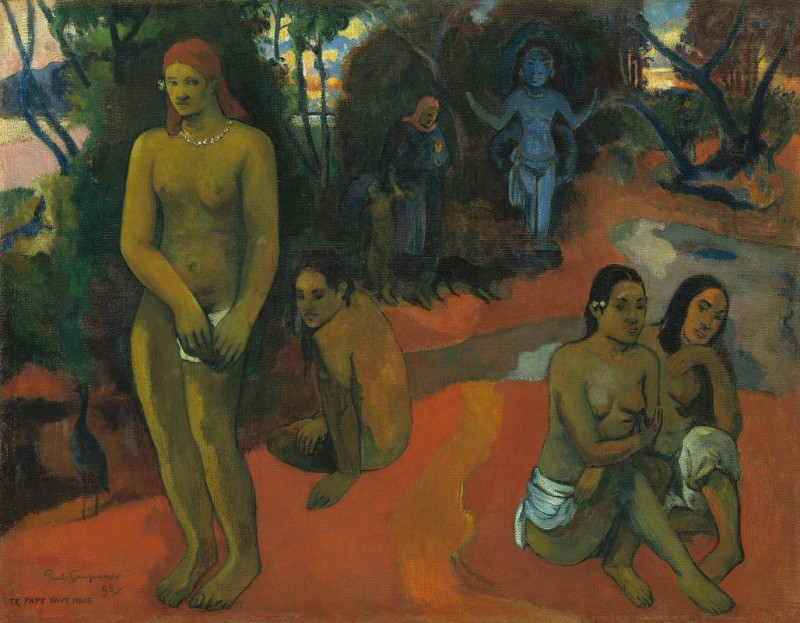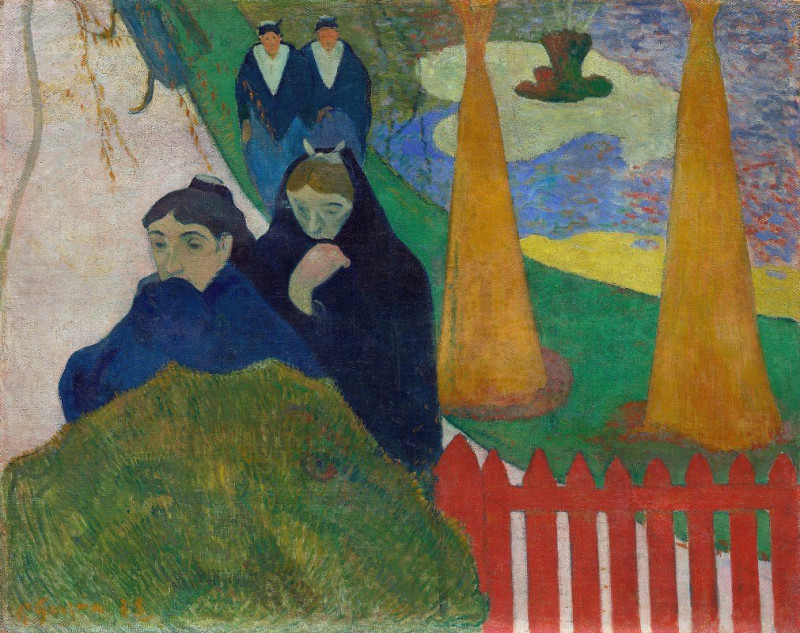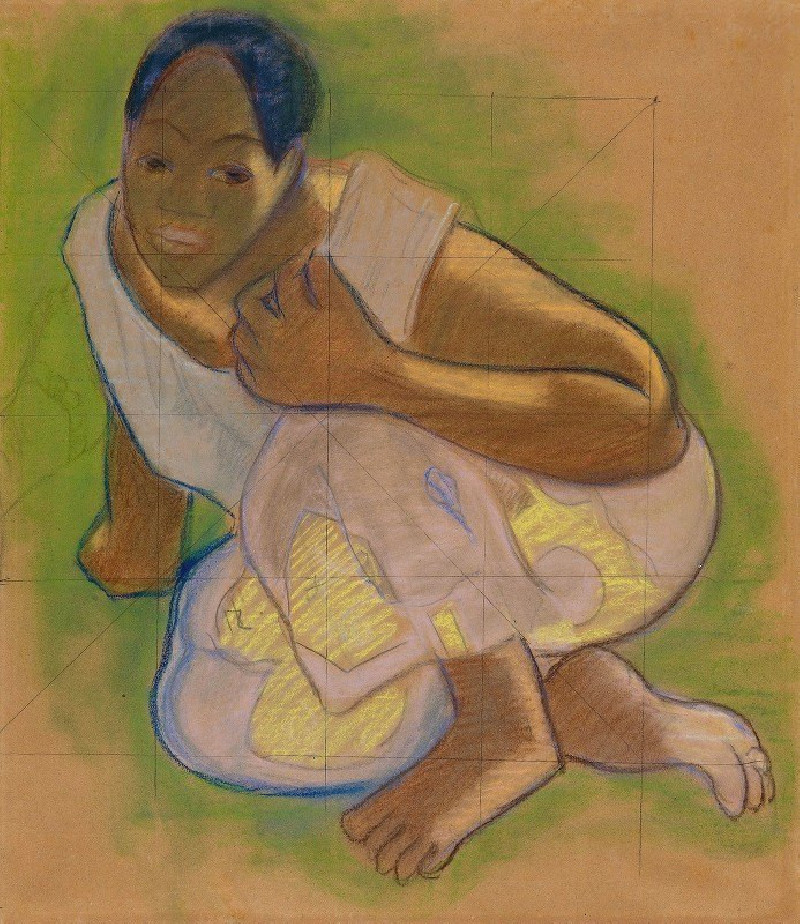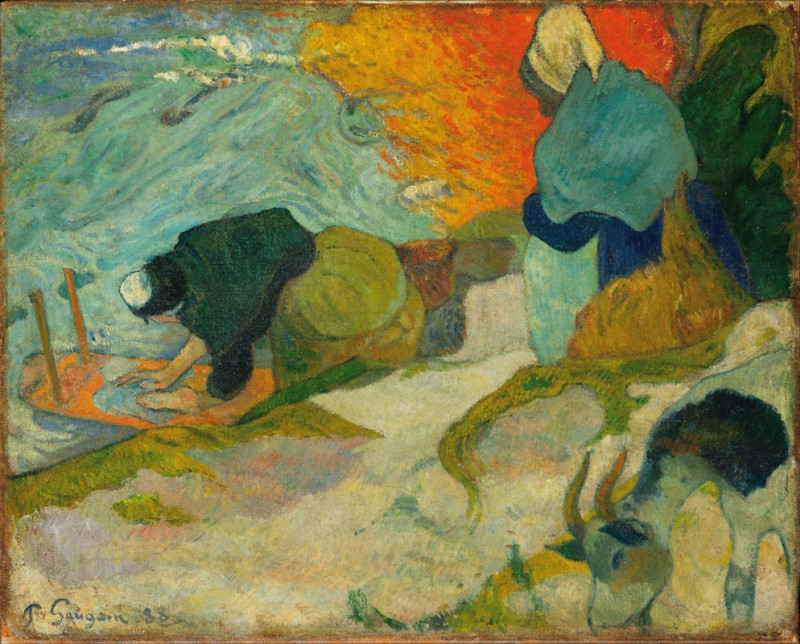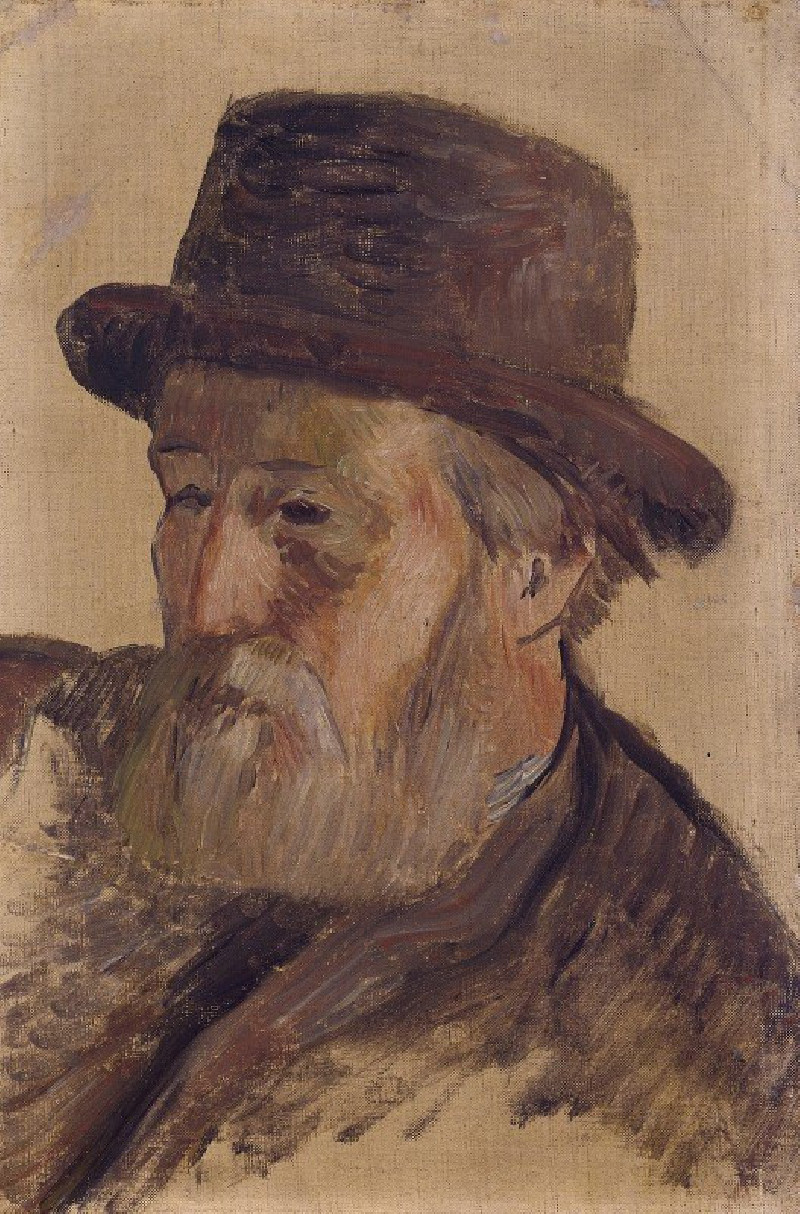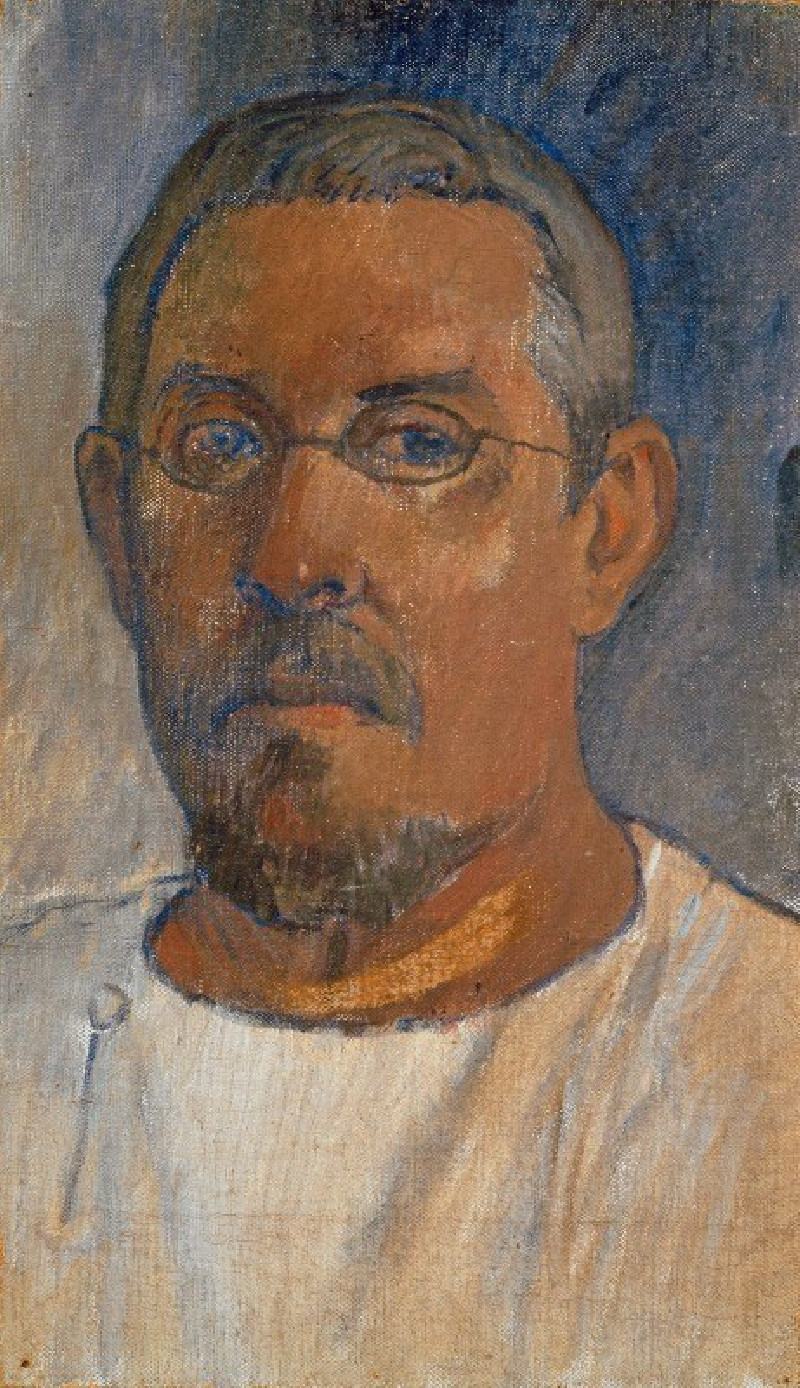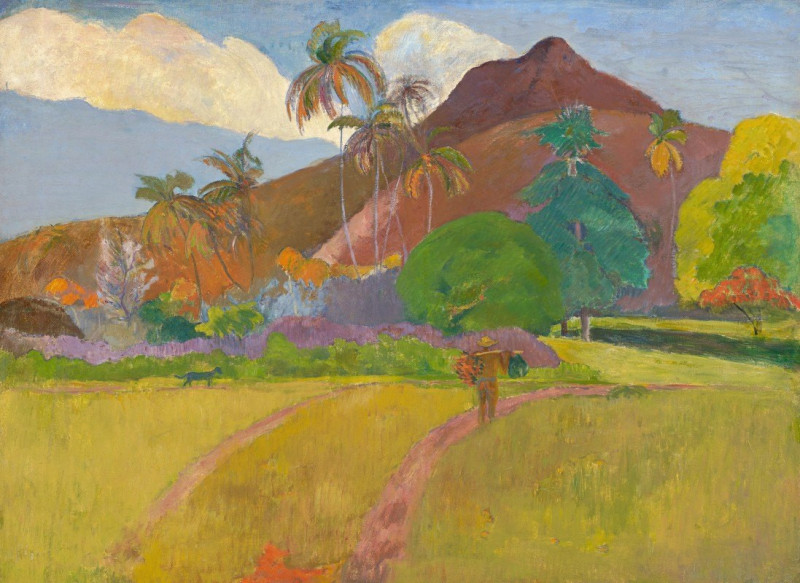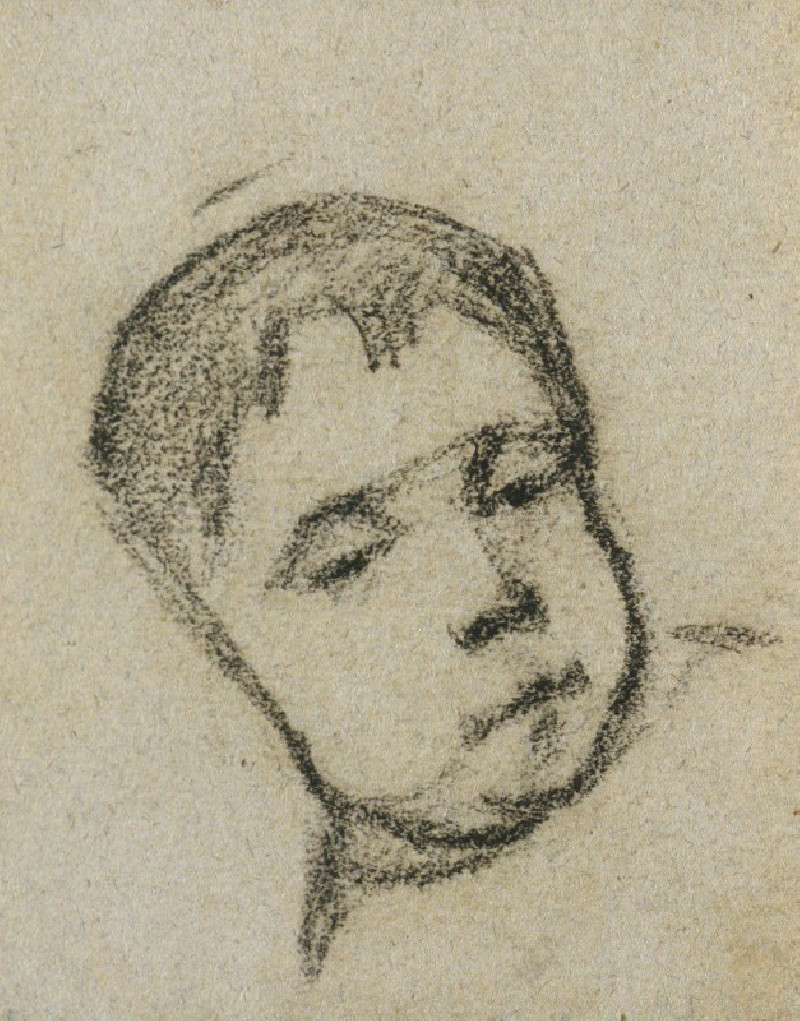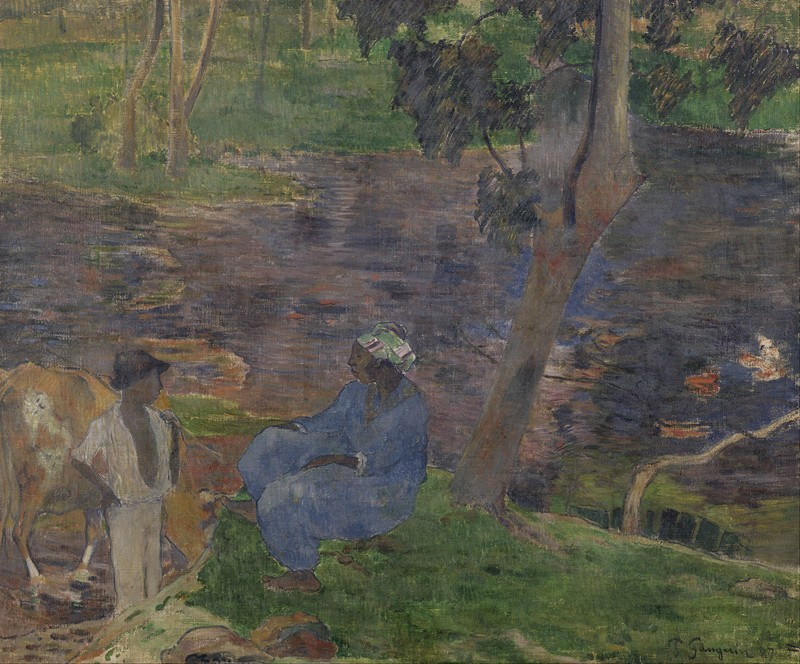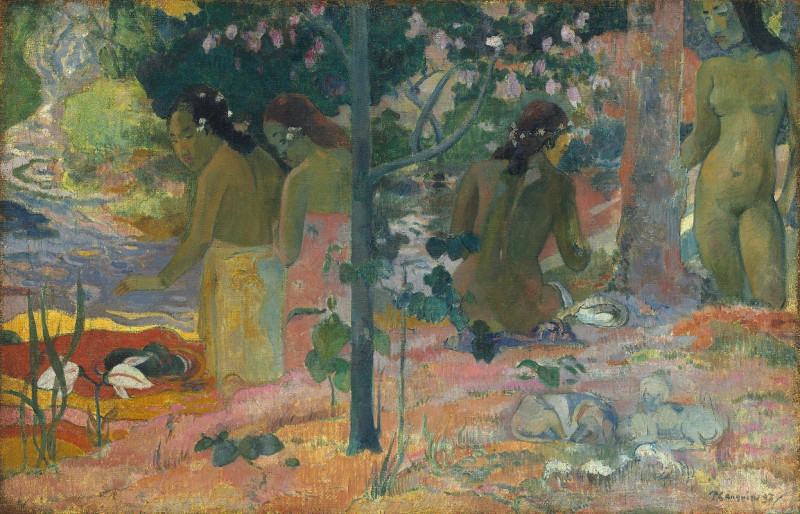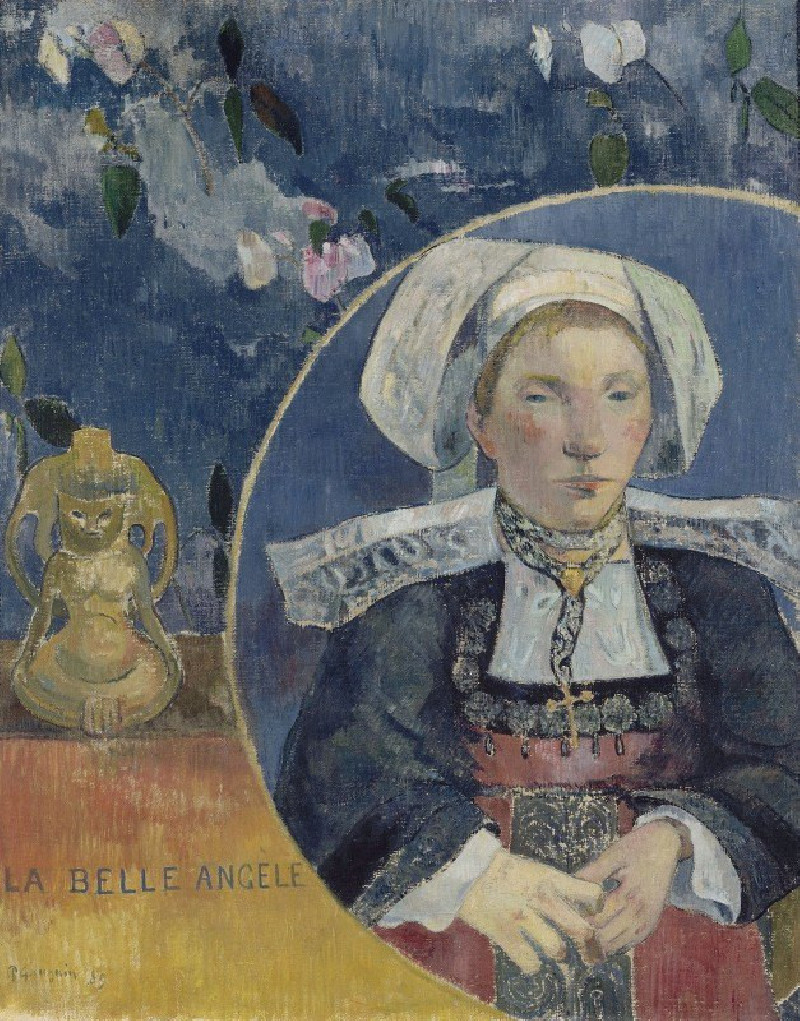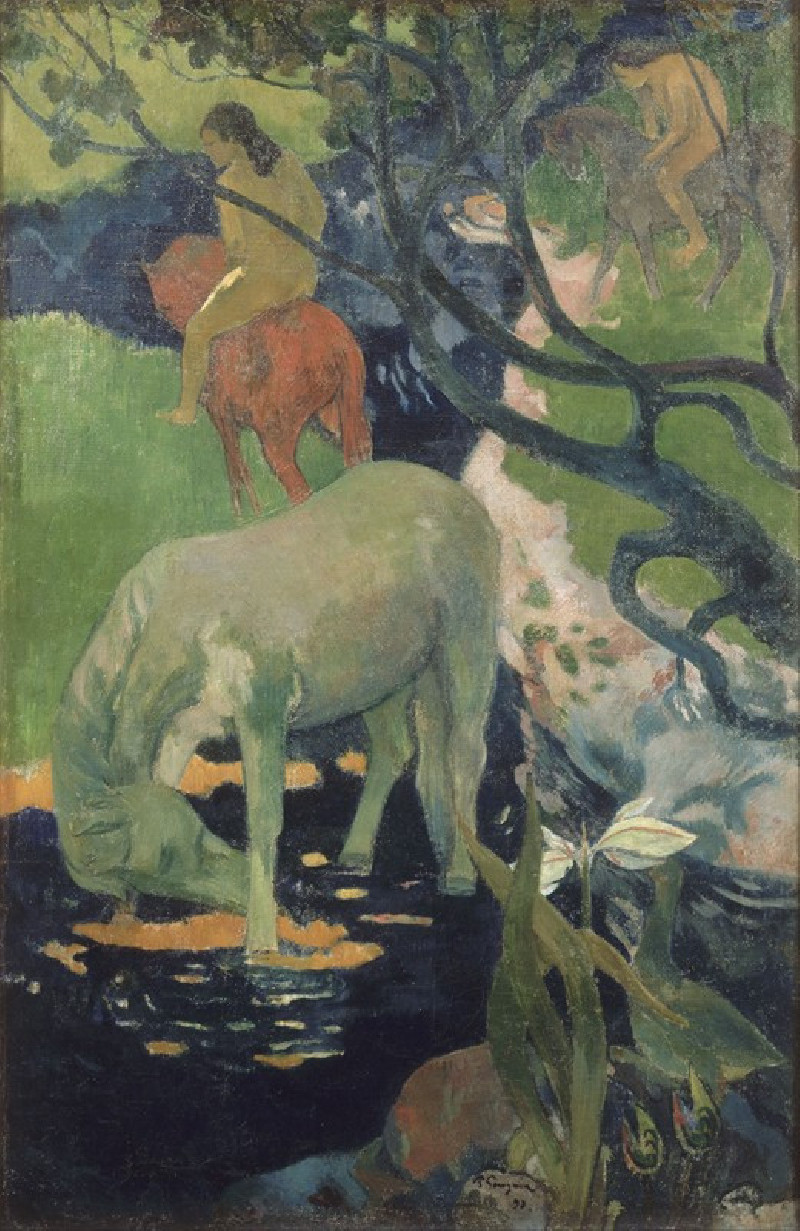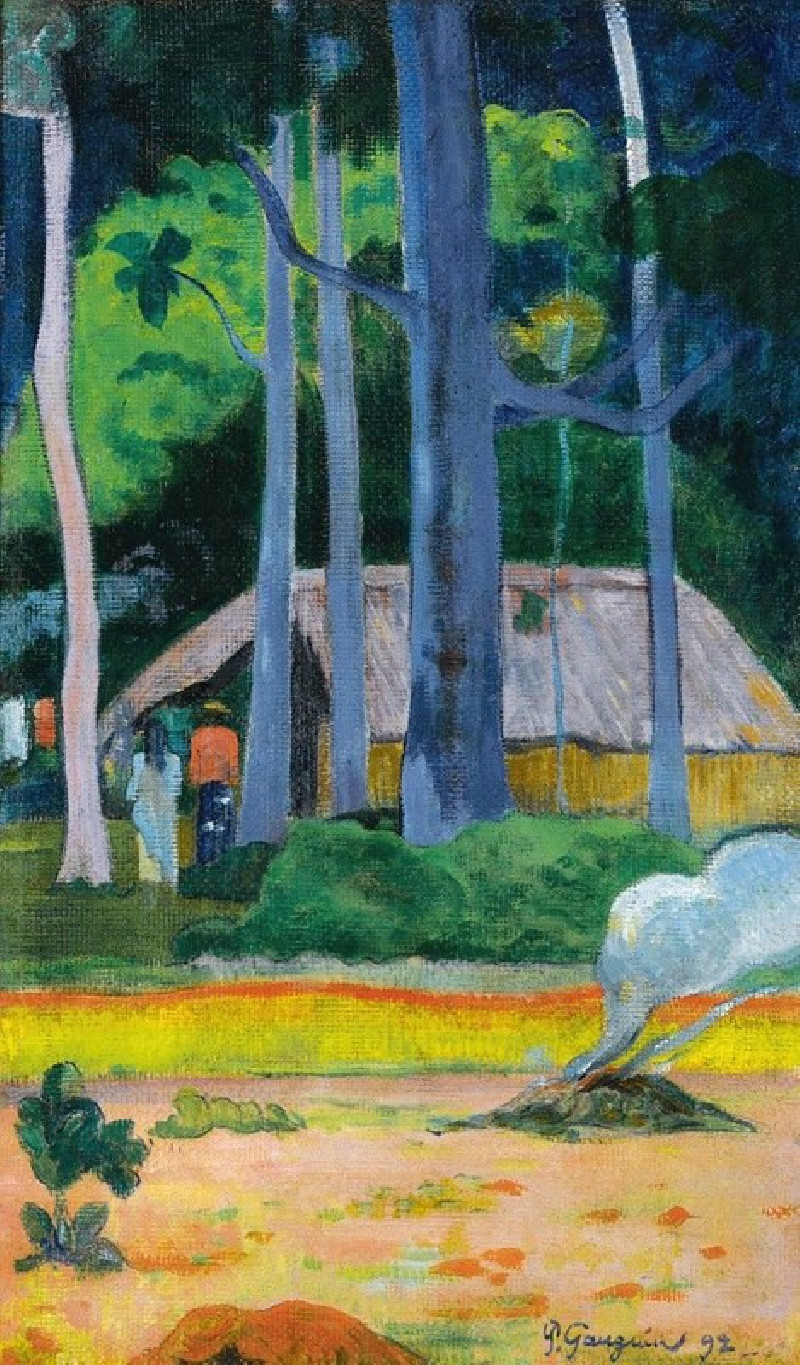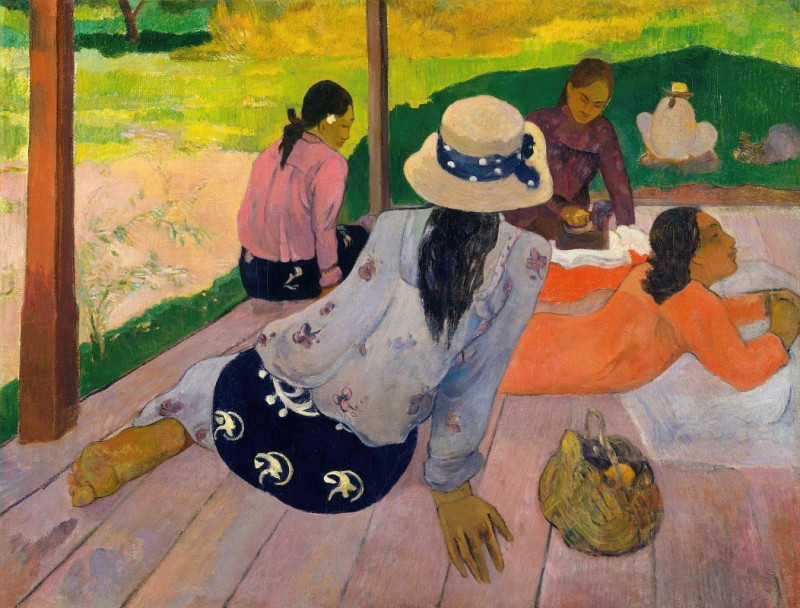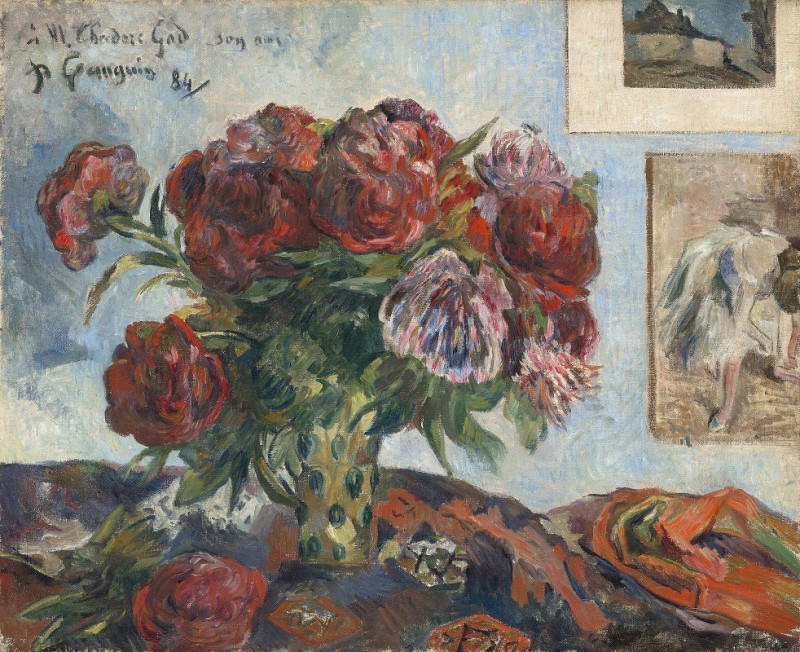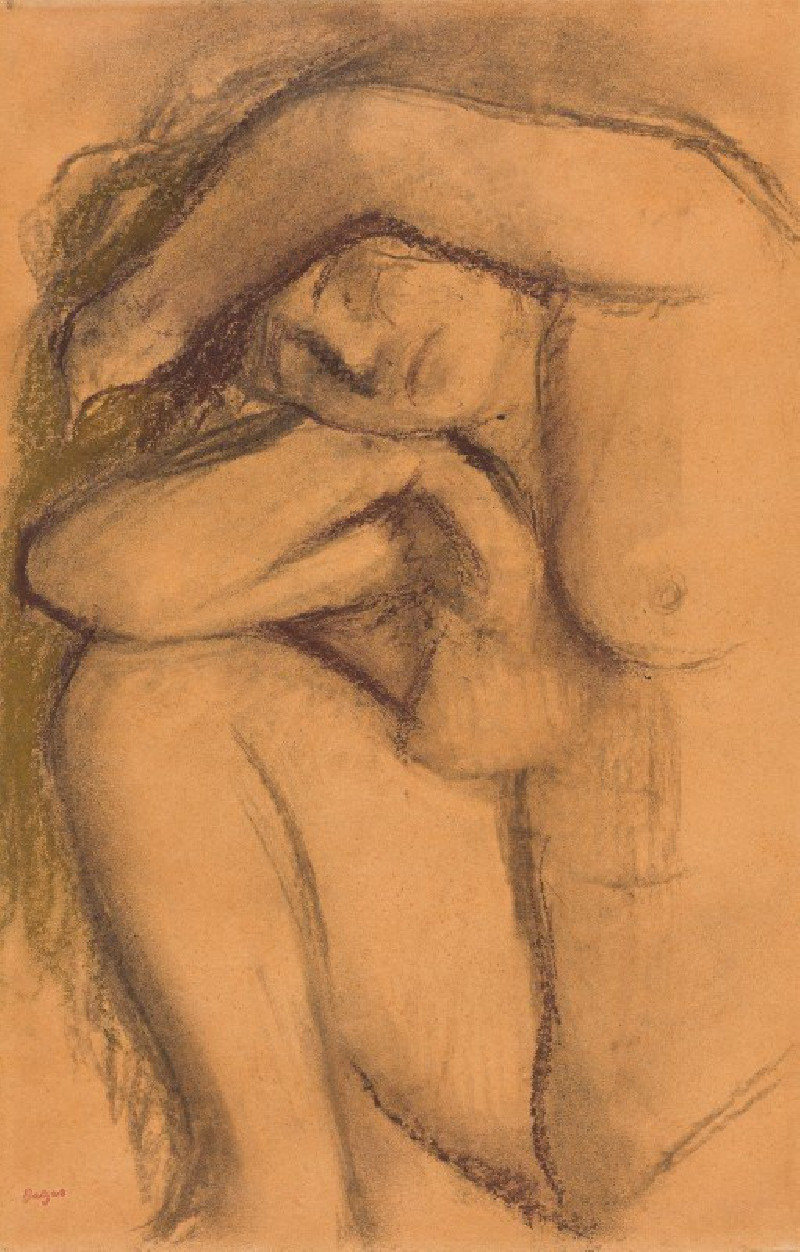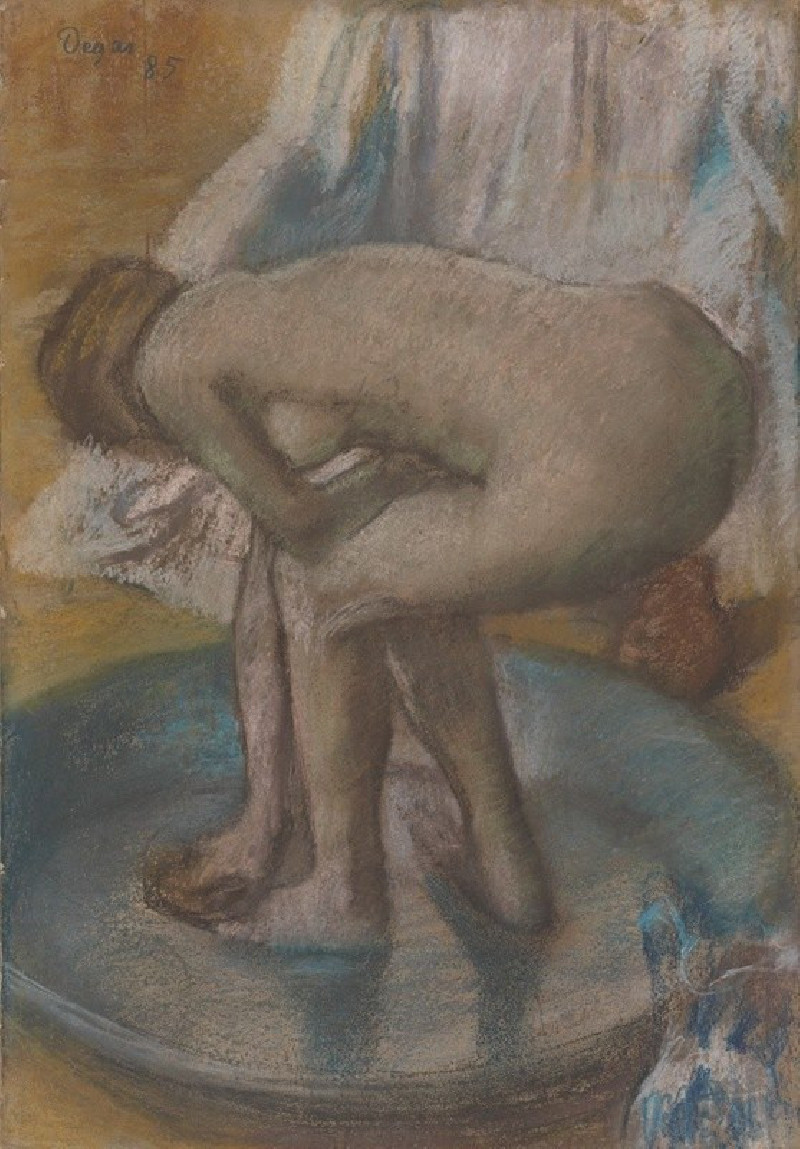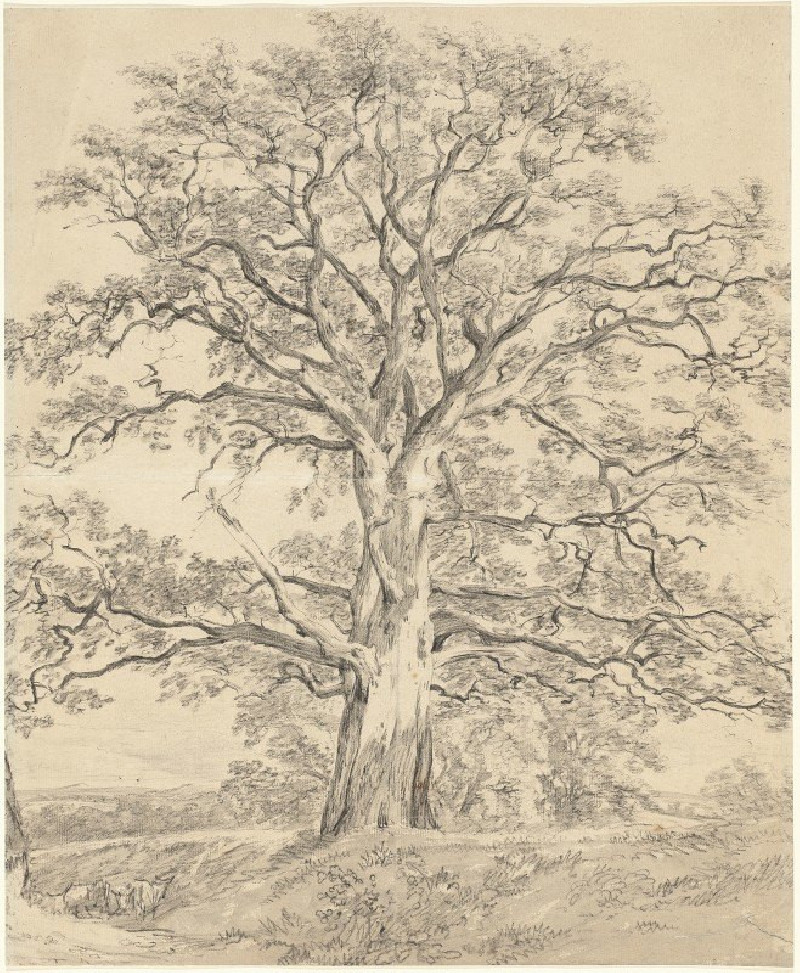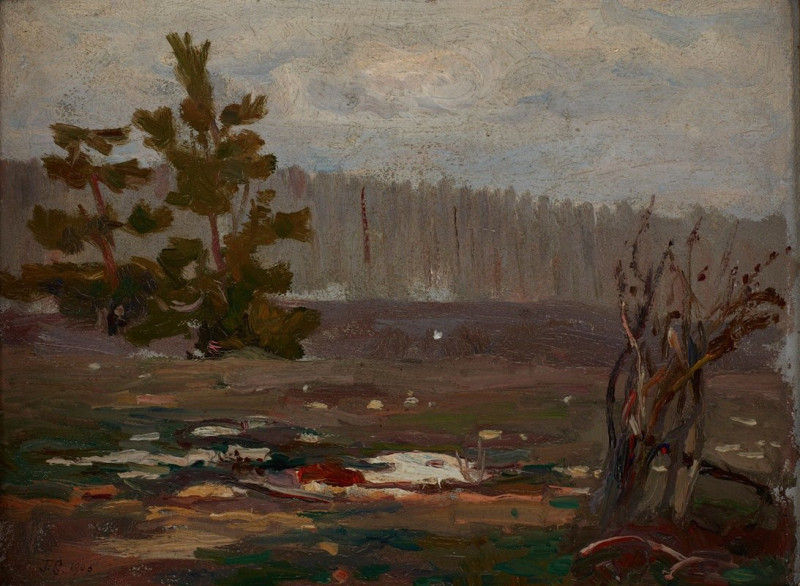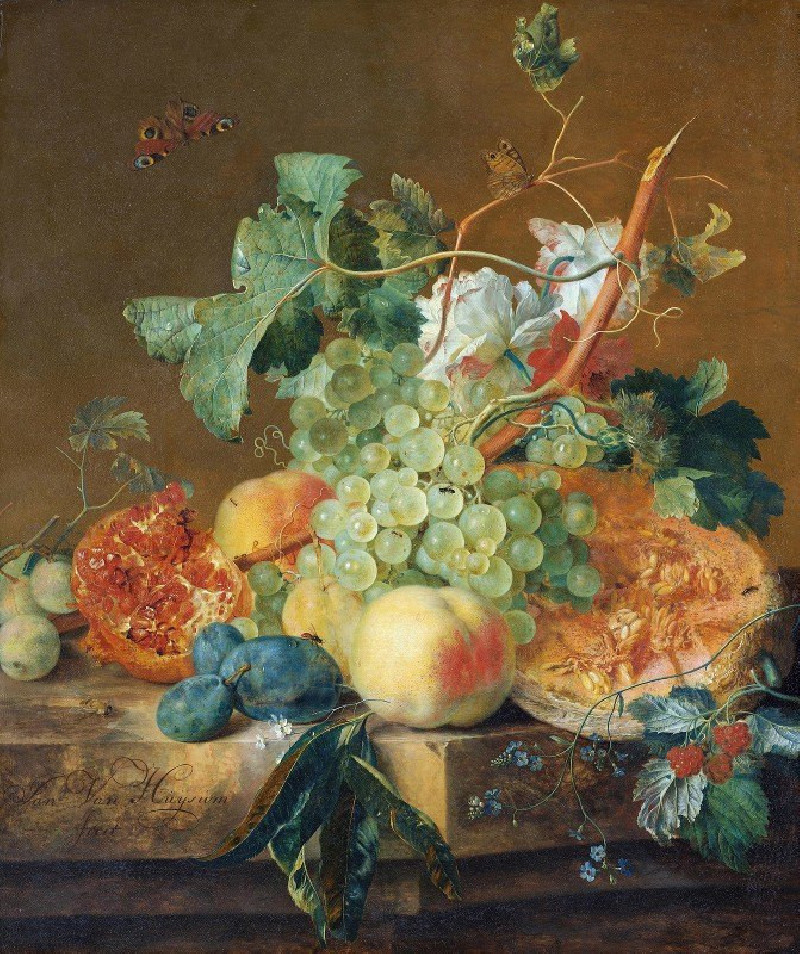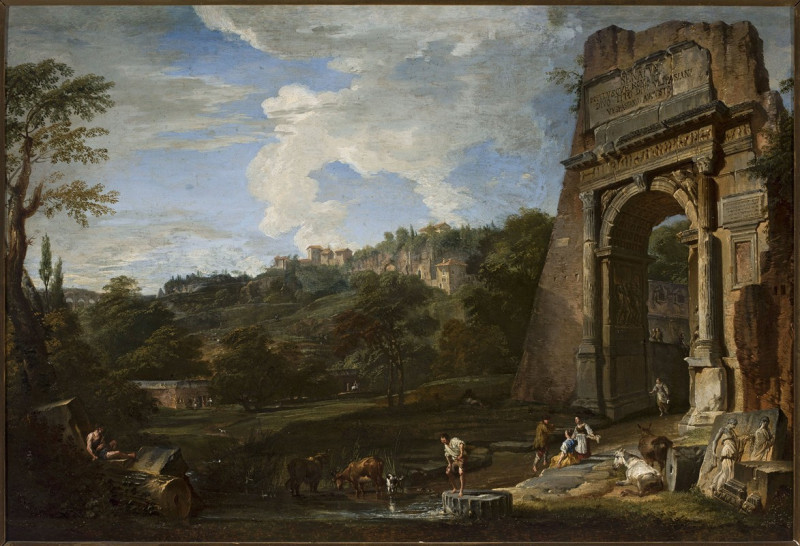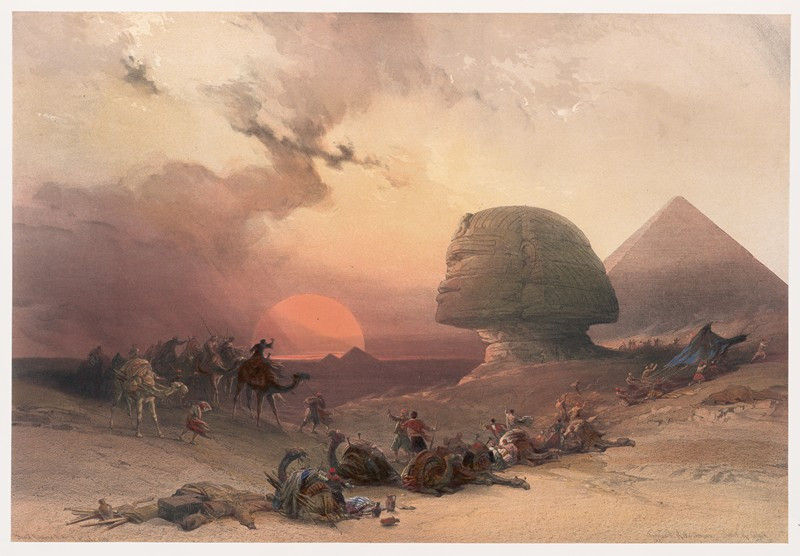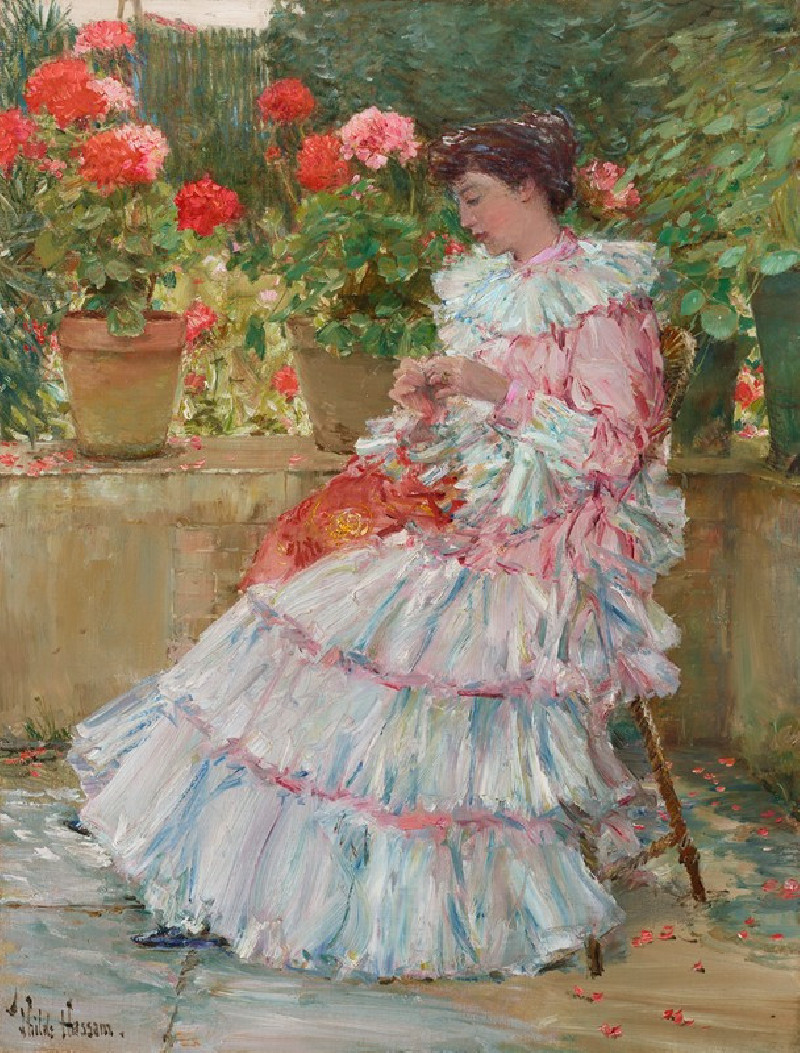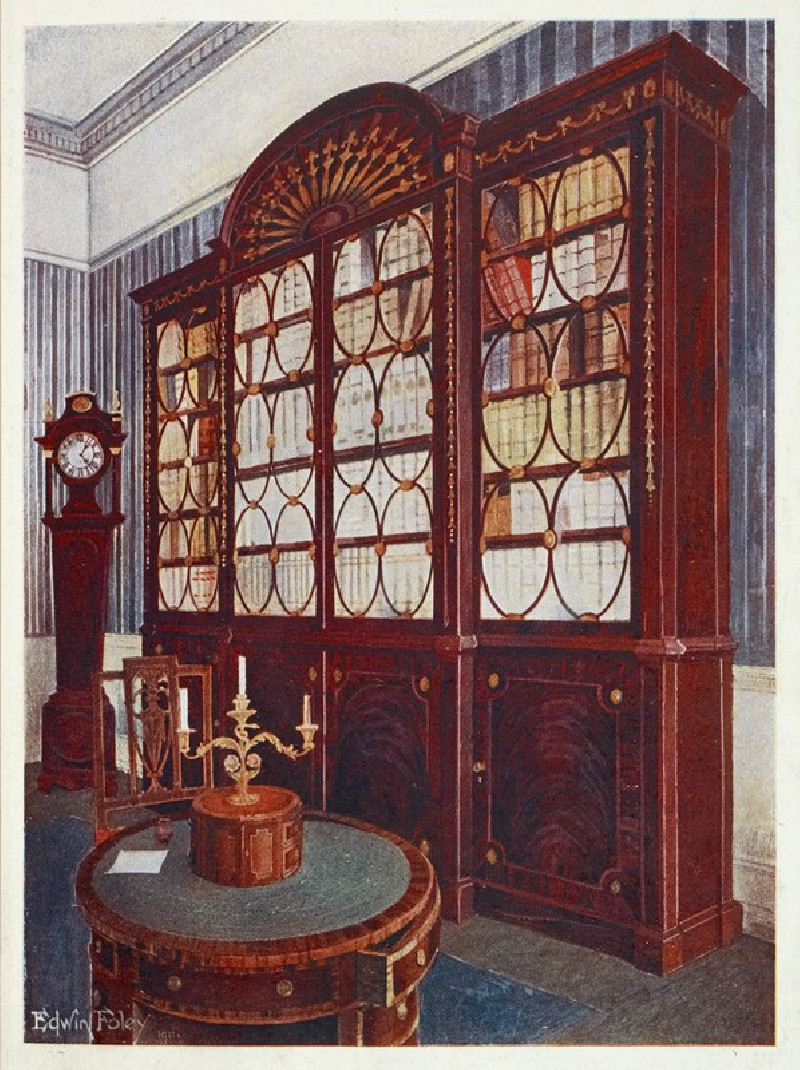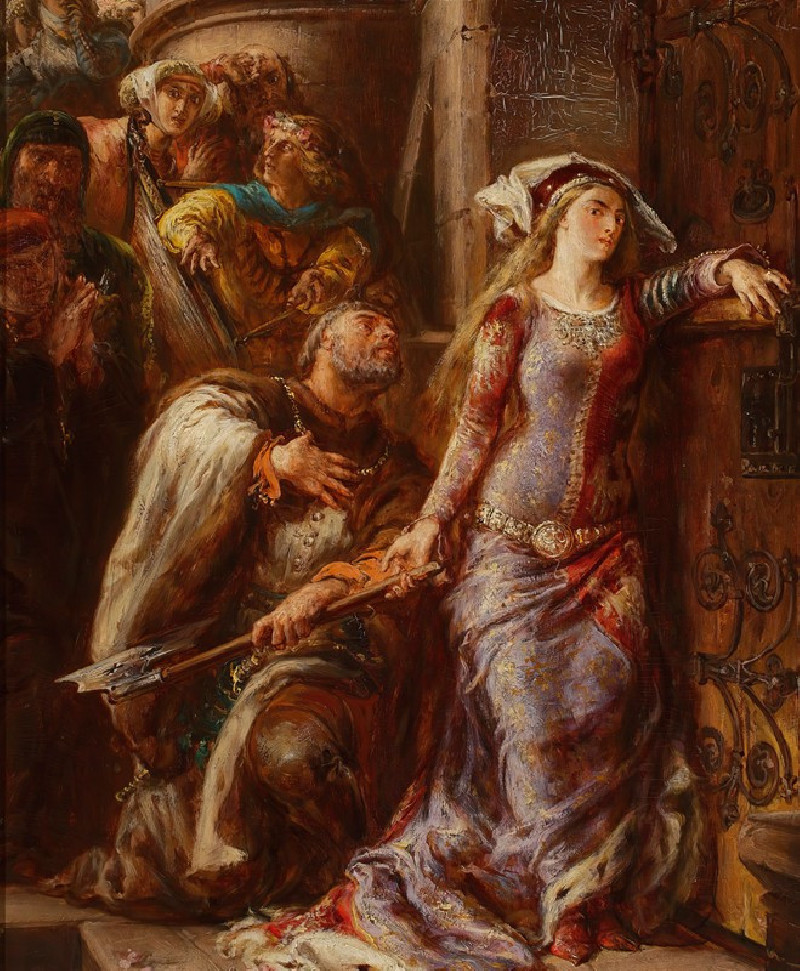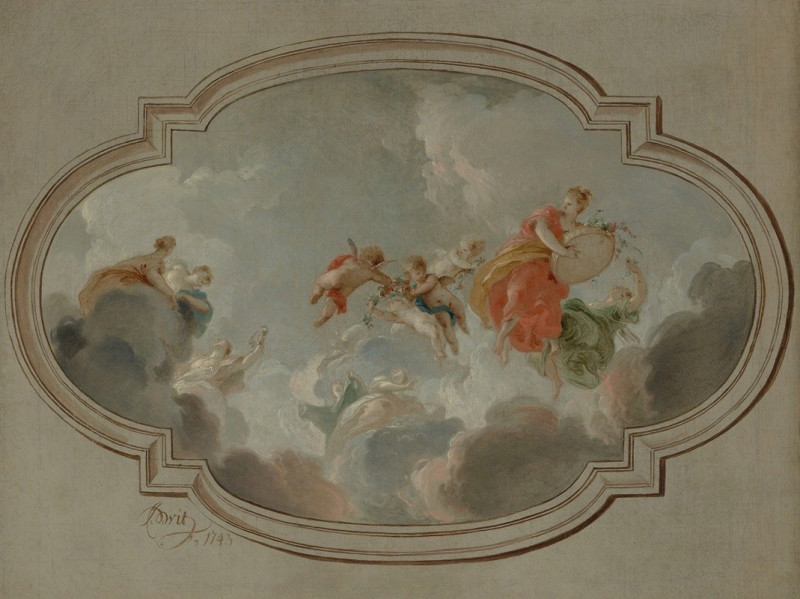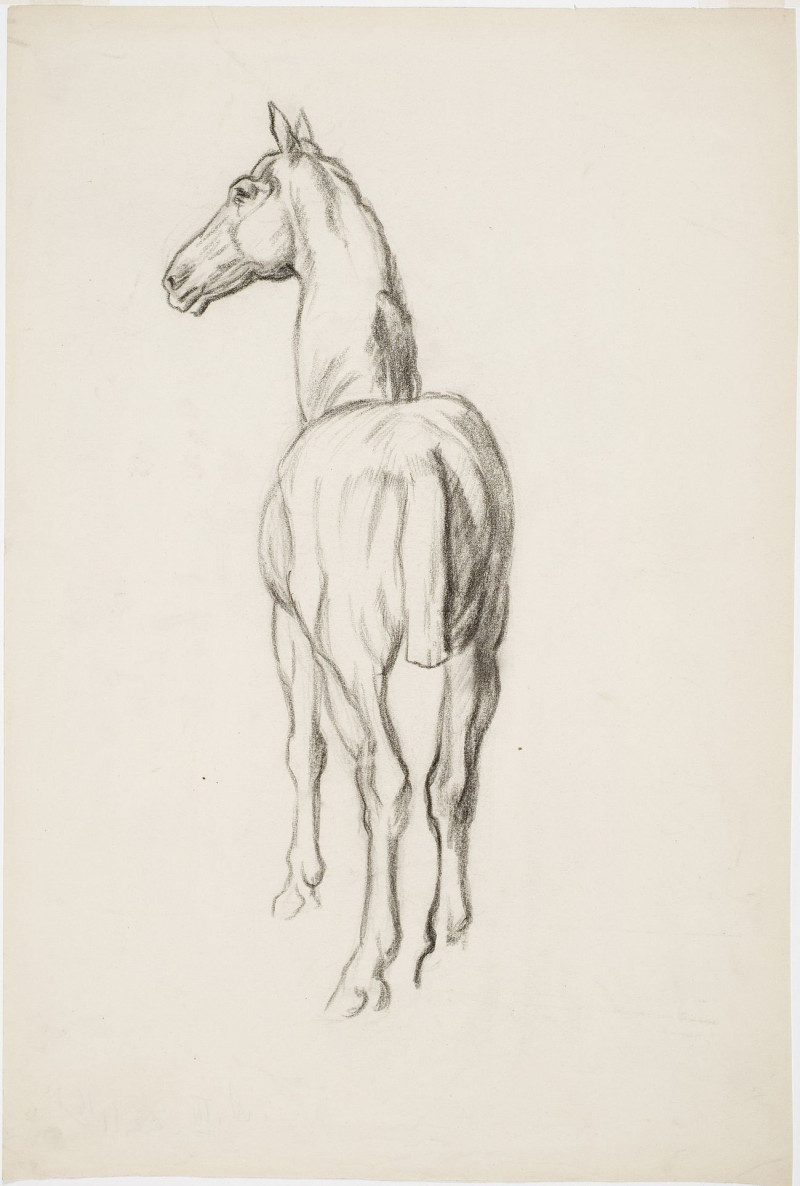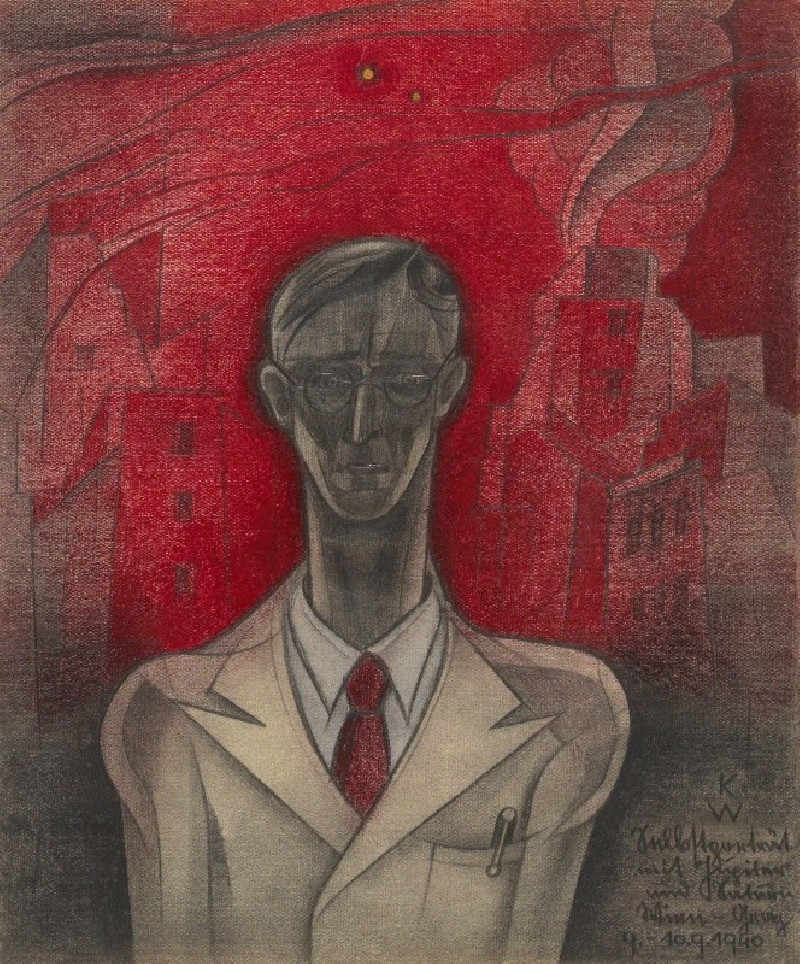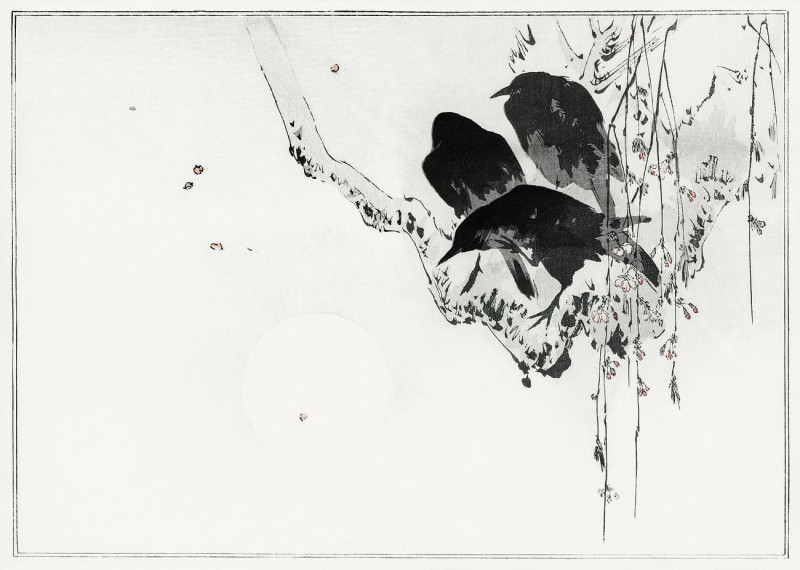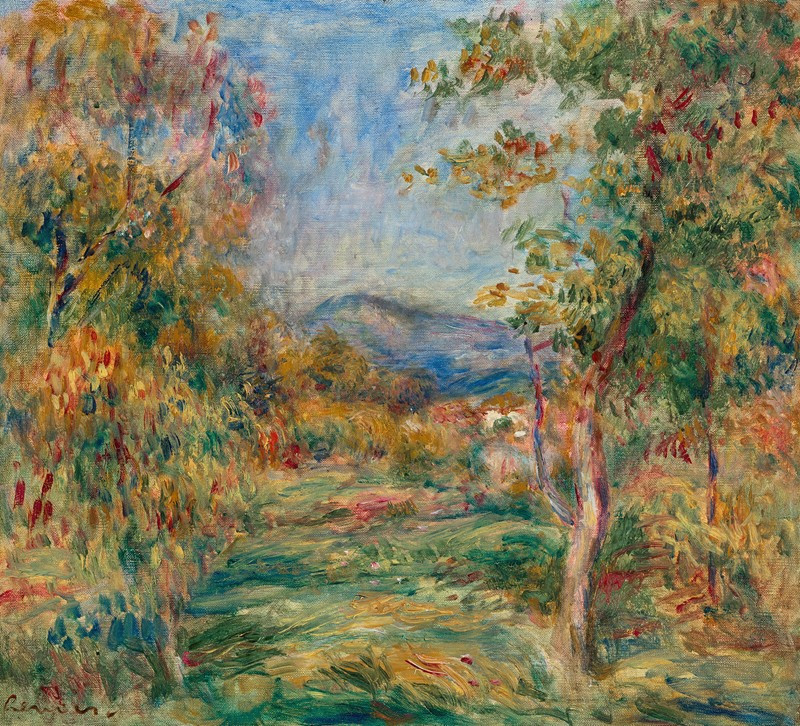La Maison Du Pan-Du (1890)
Technique: Giclée quality print
Recommended by our customers
More about this artwork
"La Maison Du Pan-Du" (1890) by Paul Gauguin is a stunning testament to the artist’s departure from Impressionism, embracing the Symbolist movement that sought deeper emotional and spiritual connections through art. Painted during his sojourn in Brittany, a region of France known for its rugged landscapes and Celtic traditions, Gauguin captures a scene brimming with bold colors and simplified forms that hint at the underlying mysteries and mystique of this remote locale.In the painting, Gauguin depicts a solid, solitary house atop a cliff, its stark, flat surfaces rendered in earthen hues that convey a feeling of both isolation and resilience. The house is surrounded by rolling hills and small, tree-like forms in varying shades of green, contrasting with the red and orange pathways that seem to both connect and divide the landscape. In the distance, a serene sea meets a sky streaked with hues of pink and blue, evoking both the calm and the dynamic nature of twilight.Gauguin's use of color in "La Maison Du Pan-Du" is not merely decorative but evocative, creating a landscape that is at once real and fantastical. The interplay of warm and cool tones enhances the visual depth and the emotional impact of the painting, inviting the viewer to ponder the life within and beyond the depicted structures.
Delivery
Returns
Eugène Henri Paul Gauguin was a French Post-Impressionist artist. Unappreciated until after his death, Gauguin is now recognized for his experimental use of color and Synthetist style that were distinct from Impressionism. Toward the end of his life, he spent ten years in French Polynesia. The paintings from this time depict people or landscapes from that region.


